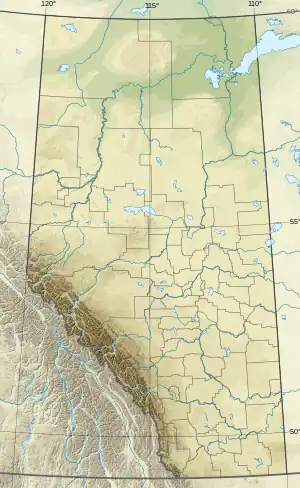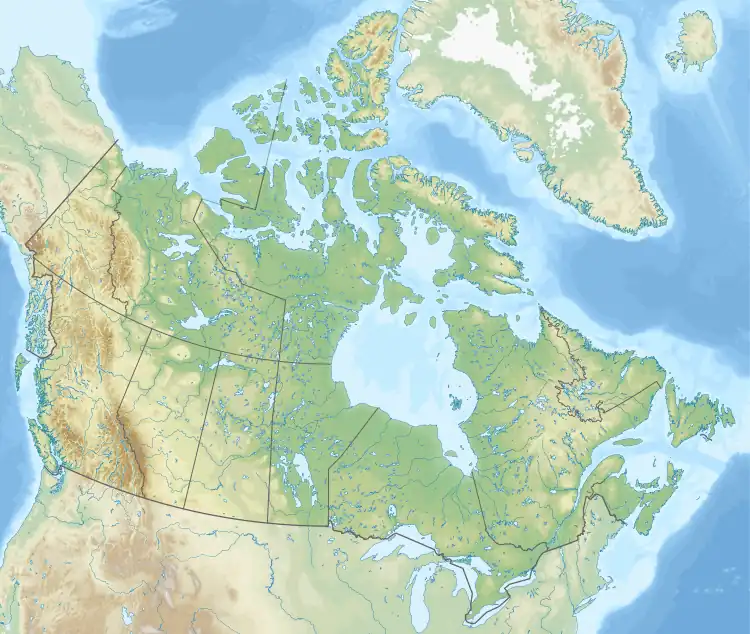Egremont | |
|---|---|
 Egremont Location of Egremont  Egremont Egremont (Canada) | |
| Coordinates: 54°02′18″N 113°07′34″W / 54.03833°N 113.12611°W | |
| Country | Canada |
| Province | Alberta |
| Region | Central Alberta |
| Census division | 13 |
| Municipal district | Thorhild County |
| Government | |
| • Type | Unincorporated |
| • Governing body | Thorhild County Council |
| Area (2021)[1] | |
| • Land | 0.19 km2 (0.07 sq mi) |
| Population (2021)[1] | |
| • Total | 46 |
| • Density | 238.3/km2 (617/sq mi) |
| Time zone | UTC−07:00 (MST) |
| • Summer (DST) | UTC−06:00 (MDT) |
| Area code(s) | 780, 587, 825 |
Egremont is a hamlet in central Alberta, Canada within Thorhild County.[2] It is located 2 kilometres (1.2 mi) north of Highway 28, approximately 37 kilometres (23 mi) north of Fort Saskatchewan. It is named after Egremont, Cumbria.[3]
Demographics
In the 2021 Census of Population conducted by Statistics Canada, Egremont had a population of 46 living in 27 of its 34 total private dwellings, a change of -4.2% from its 2016 population of 48. With a land area of 0.19 km2 (0.073 sq mi), it had a population density of 242.1/km2 (627.0/sq mi) in 2021.[1]
As a designated place in the 2016 Census of Population conducted by Statistics Canada, Egremont had a population of 48 living in 27 of its 34 total private dwellings, a change of 14.3% from its 2011 population of 42. With a land area of 0.19 km2 (0.073 sq mi), it had a population density of 252.6/km2 (654.3/sq mi) in 2016.[4]
See also
References
- 1 2 3 "Population and dwelling counts: Canada and designated places". Statistics Canada. February 9, 2022. Retrieved February 10, 2022.
- ↑ "Specialized and Rural Municipalities and Their Communities" (PDF). Alberta Municipal Affairs. January 12, 2022. Retrieved January 21, 2022.
- ↑ Thorhild and District Historical Society (1985). Building and working together : a study of the Thorhild area. Vol. 1. p. 10.
- ↑ "Population and dwelling counts, for Canada, provinces and territories, and designated places, 2016 and 2011 censuses – 100% data (Alberta)". Statistics Canada. February 8, 2017. Retrieved February 13, 2017.